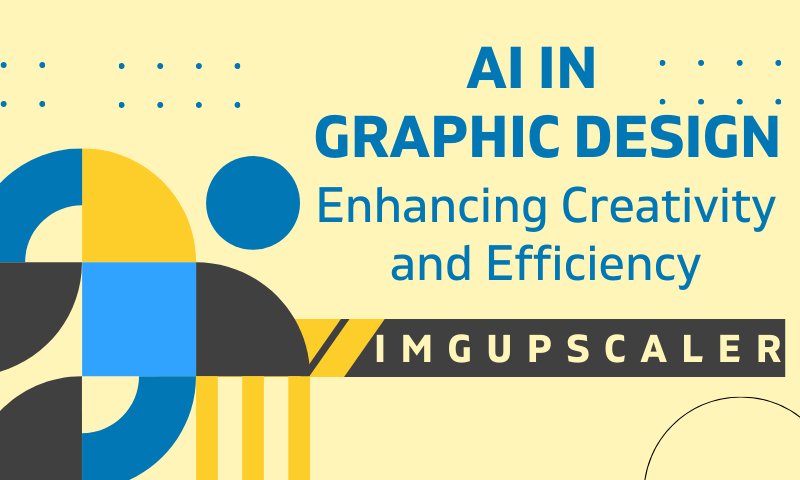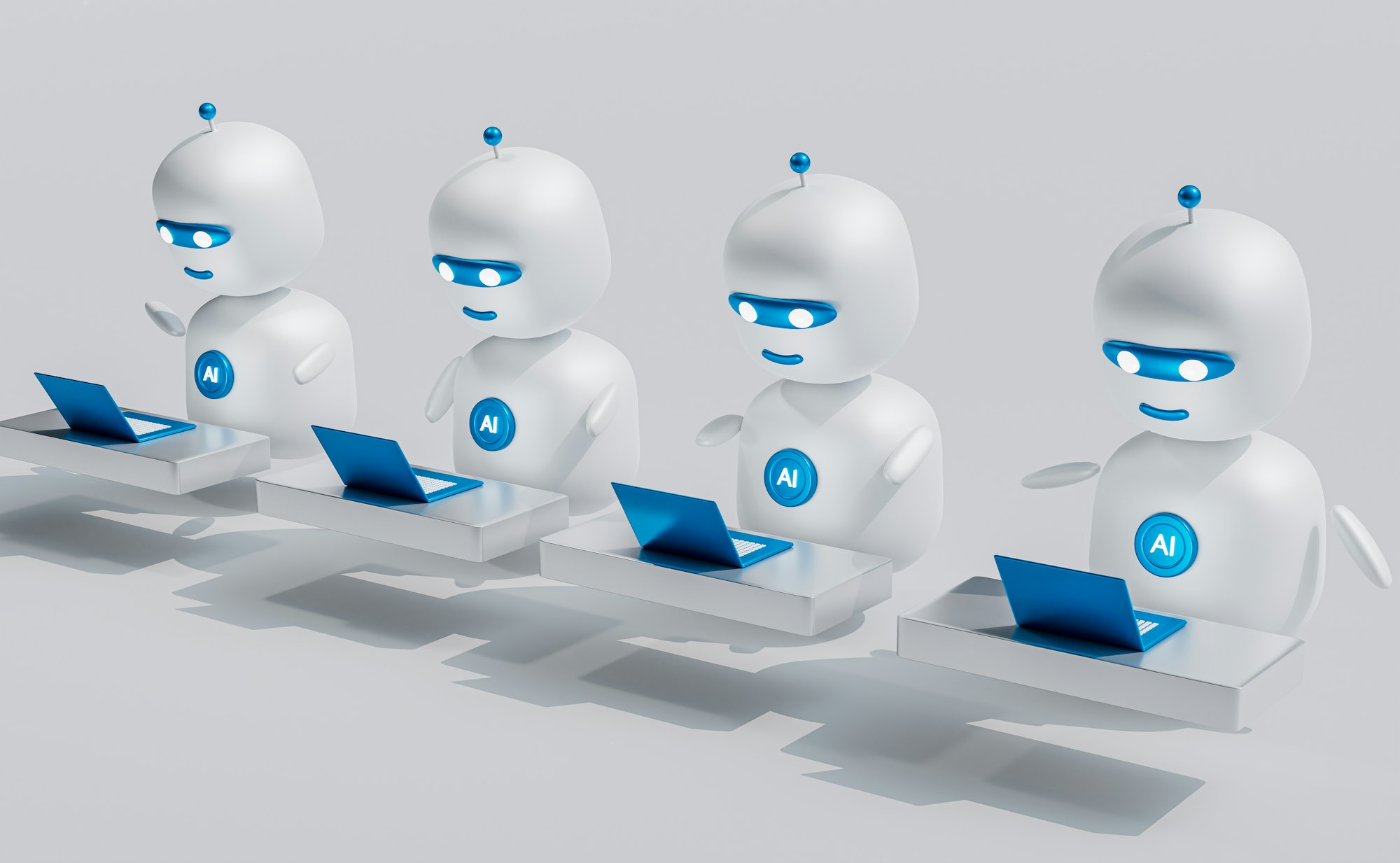AI in Graphic Design: Enhancing Creativity and Efficiency

Regarding AI art, we will think of Midjourney and Stable Diffusion in AI painting. What can you think about AI graphic design? Do you know what AI can do in graphic design? AI is gradually glowing in graphic design, a subtle influence on the designer's way of working. AI can not only improve the efficiency of work but also help designers to stimulate creative inspiration and simplify the design process. Let's explore it together!
Artificial Intelligence in Graphic Design
What can you think of when you combine graphic design and artificial intelligence? Since the introduction of Chatgpt, we have learned something about machine learning with AI. Artificial Intelligence machines learn and progress through many analytics to generate and optimize designs while helping people complete simple, repetitive tasks efficiently.
AI can be used in graphic design for image recognition, color analysis, font selection, optimizing layouts, or inspiring designers with brand-new design ideas.
- Enhanced Creative Ideation
Artificial intelligence is used to analyze huge databases of design elements, styles, and trends in graphic design. And process this data to provide designers with valuable insights and inspiration. Allow designers to explore countless design possibilities, stimulate innovative ideas, and push creative boundaries.
- Streamline the design workflow
In graphic design, there are inevitably time-consuming, repetitive tasks that can be left to AI, which specializes in automating these tasks, increasing the designer's efficiency and spending more time on more strategic and creative work. Whether it's batch resizing image formats or basic editing and organizing layers, AI can handle it with ease.
- Personalized Design Solutions
Using machine learning with AI to investigate personal behavior and alternatives permits designers to create designs that meet the desires of their goal businesses. Personalization can beautify the relationship between manufacturers and customers, increase consumer loyalty and user stickiness, and further boom consumer engagement.

- Improve Design Consistency
Establishing an exceptional logo layout and deciding on design factors that can be steady in fashion enables a deeper influence on the thoughts of the person. AI can keep the design as consistent as possible by analyzing and following the guidelines of style design. By making each design element fit the brand image, AI can better build the brand image and increase awareness and trust.
- Real-time design feedback
The operation of artificial intelligence in graphic design can be fed back to the designer in real-time, making it easier for the designer to make adjustments and optimizations during the process. Problems can be solved during the process, better improving the overall aesthetics and usability of the design. This iterative real-time feedback loop promotes design enhancement and improvement, enabling designers to create designs that resonate with their target audience.
AI-Driven Graphic Design Tools
Adobe Sensi Its features include content-aware filling, automatic color matching, font recognition, and more. These features cover the entire Creative Cloud family. It integrates with Adobe software to streamline the designer's graphic design workflow.
Fontjoy is a design tool that helps designers make font combinations. It creates subtle combinations of fonts through advanced font vector technology. When designers struggle with font styles and alignments, Fontjoy can save you time by rescuing you.
Microsoft Designer is a template design tool that runs on AI. Designers can use text prompts to find the templates and images they need or generate color palettes and more. If you want to design a social media post to spark conversation, it only takes a few minutes with Microsoft Designer.
Galileo AI It will use artificial intelligence to combine elements and icons to create high-fidelity UX/UI designs based on text prompts from user input. It can also create copy for product design, greatly allowing you to appreciate the potential of AI and utilize creativity to improve efficiency.
Flair AI is a great AI-generated product photography tool for e-commerce platforms. Users can get product photography by entering text to describe the shooting style, props, lighting, theme, and background. In addition to that, Flair also provides some prop ideas with features. If it is a conceptual product design, Flair can help you imagine the future realization.
Uizard utilizes AI for UI design, such as app and web design. You can use Uizard to create prototypes and models, and wireframes for your web pages. Uizard generates a design for the user to meet based on text prompts, then generates wireframes from hand-drawn drawings and turns the screenshots into editable web designs. Just like Figma can convert HTML into Figma designs.
The Future of AI in Graphic Design
Artificial Intelligence generated 3D designs:
With the rapid advancement of AI mapping, the development of AI in creating complex 3D designs and animations is gradually accelerating. As the technology matures, AI-generated 3D elements will play an important role in web and app design, creating immersive and interactive user experiences.
Artificial intelligence-driven augmented reality:
(AR) is becoming more widely used in design, and AI will unleash its potential to enhance AR experiences. We are moving into the era of spatial computing, with Adobe launching a beta version of its AR image editor Aero and Apple launching its M2 glasses, Vision Pro. AI algorithms will enable real-time object recognition and interactive overlays, making augmented reality design more intuitive and engaging.

Hyper-personalization:
Artificial intelligence algorithms will increasingly personalize design experiences by continuously learning and analyzing user behavior and preferences, which will become the norm. AI-powered design tools will create designs tailored to the user, maximizing user engagement and satisfaction with the fit of the product.
Generative Design:
Generative design will likely revolutionize the concept of traditional design creation. AI algorithms will provide a wide range of design solutions based on specific criteria, giving designers a variety of creative possibilities. This will further inspire artists and allow them to express their potential and creativity.
Conclusion
Artificial Intelligence (AI) has, step by step, penetrated into all elements of photo design, optimizing the design method at the same time as inspiring designers.AI has delivered a new technology complete of opportunities to designers.AI is still evolving, and its potential could be slowly unleashed.
While taking part in AI's comfort, we also want to discover ways to strike a harmonious balance between AI and human beings. AI facilitates us to optimize our work, and architects hold to inject their own creative, imaginative, and prescient. Let's be patient with how this type of harmonious balance develops!